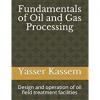|
|
Pre-Treatment Of Landfill Gas
#1

Posted 07 July 2011 - 12:17 AM
I'm Crystal from Malaysia.
I'm not a chemical engineering student, but an environmental science and management student.
I'm currently undergoing my industrial training, and I come across a task relating to chemical engineering.
Below is the explanation of the situation given:
Landfill gas (LFG) is captured, and then undergoes pre-treatment before entering the gas engine to generate electricity.
The type of pre-treatment used are chiller and carbon adsorption scrubber.
Two flow meters were placed along the process:
i. before LFG enters the pre-treatment process
ii. after the pre-treatment before entering the gas engine
Data shows that 60% CH4 was recorded before LFG enters pre-treatment and 66% CH4 was recorded after the pre-treatment.
I could not find any explanation on why the percentage of CH4 after pre-treatment is way higher than before pre-treatment.
From my understanding, pre-treatment functions to remove trace gases and impurities from LFG such as H2S, siloxane and more.
The percentage of these gases in LFG theoretically should be around 1%.
Therefore, if these gases are removed, then the percentage of CH4 after treatment should be around 61-62%.
However, percentage of CH4 recorded in the situation given is way higher than the theoretical value.
Therefore, I wish to seek for advice regarding this matter.
Is this situation common in landfill gas utilization projects?
One possibility in this matter maybe due to faulty flow meter, but other than this, is there any explanation to support the situation given?
Is there a possibility that the percentage of trace gases in the LFG is higher than 1%?
Are there any websites or forums that I can refer to in order to research more on this matter?
Thank you for your time and hope to receive responses from all of you soon.
Regards,
Crystal
#2

Posted 07 July 2011 - 01:27 AM
What are the other 40% ?
Why do you need a chiller ? May have condensation ?
Hope it helps
Breizh
#3

Posted 07 July 2011 - 01:40 AM
Well, the other 40% refers to other gases in the landfill gas.
The composition of landfill gas is as below:
60% methane
38-39% carbon dioxide
<1% oxygen
<1% other gases and impurities like H2S, siloxane and others
Yup, chiller is to condensate the gas in order to remove water, H2S, and other trace gases.
Scrubber will then remove other impurities.
So my question is will this chiller and scrubber remove carbon dioxide as well?
Will these processes increase the concentration of methane?
Thank you.
Hi Cristal ,
What are the other 40% ?
Why do you need a chiller ? May have condensation ?
Hope it helps
Breizh
#4

Posted 07 July 2011 - 04:21 AM
It is assumed that LFG passes successively from a compressor, a chiller, a scrubber, then goes to the engine for burning. Assuming that flow meters downstream compressor and scrubber operate faultlessly, there must be some CO2 absorbed before gas entrance to engine. The engine can burn gas of 39% CO2 - 60% CH4, but this gas seems to undergo a partial CO2 removal (unwanted, but not bad) during "pretreatment".
Carbon dioxide is solved in chiller condensate at an amount proportional to its partial pressure, see http://www.cheresour...carbon-dioxide/. Removal there is expected to be rather insignificant, due to assumed small quantity of condensate going out of the chiller. But what about the scrubber? Most probably it does not use pure water as an absorber, but operates under pressure and it is reasonable to assume that main CO2 retention is realized there. Can you give operating data of the scrubber (flows, gas pressure, temperatures, nature of liquid used)? This can be No 1 suspect.
#5

Posted 07 July 2011 - 10:04 PM
Thank you for your reply.
Your information has been useful.
The medium used in the scrubber is activated carbon.
Sorry to say that I do not have any operating data of the scrubber.
I've given all information that I have with me in my question above.
I've talked to my CEO regarding your reply and he's pleased with it.
Thank you very much.
Since the medium in the scrubber is activated carbon, so does it mean CO2 removal can happen significantly in it?
Sorry if my question sounds stupid because I'm not from engineering background.
So I'm actually still quite blur with the whole situation.
I'm learning it step-by-step now.
Regards,
Crystal
Reported gas composition is apparently on dry basis. "Trace gases" in LFG can be higher than 1% (see http://en.wikipedia....ki/Landfill_gas), but this may not be the (main) reason for the observed deviation. Most probably it is the "carbon adsorption scrubber" that causes it.
It is assumed that LFG passes successively from a compressor, a chiller, a scrubber, then goes to the engine for burning. Assuming that flow meters downstream compressor and scrubber operate faultlessly, there must be some CO2 absorbed before gas entrance to engine. The engine can burn gas of 39% CO2 - 60% CH4, but this gas seems to undergo a partial CO2 removal (unwanted, but not bad) during "pretreatment".
Carbon dioxide is solved in chiller condensate at an amount proportional to its partial pressure, see http://www.cheresour...carbon-dioxide/. Removal there is expected to be rather insignificant, due to assumed small quantity of condensate going out of the chiller. But what about the scrubber? Most probably it does not use pure water as an absorber, but operates under pressure and it is reasonable to assume that main CO2 retention is realized there. Can you give operating data of the scrubber (flows, gas pressure, temperatures, nature of liquid used)? This can be No 1 suspect.
#6

Posted 07 July 2011 - 11:55 PM
My first impression of "scrubber" was that it used some liquid to retain noxious gases, now I understand it is a carbon filter. Nevertheless its characterization as scrubber is right, see http://en.wikipedia....ioxide_scrubber, where it is reported that "activated carbon can be used as carbon dioxide scrubber". Goggling "CO2 adsorption by activated carbon" can reveal a lot of additional references to support it.
Supplier's operating manual of the existing scrubber (if found) may report CO2 retention.
Carbon regeneration medium is expected to be fresh air, probably CO2 (in excess to that of air) can be measured in off gases by analysis (if CO2 is not too diluted with air).
A mass balance (specific for every component) at steady state is normally implemented for a plant to know its operation. Stream flows and composition are measured, and precision of measurements is verified by the principle that quantity in should equal quantity out (for any component, as well as for the total). In this way you are certain enough about the measured quantities. Care should be taken for the CO2 balance during this future activity (compressor suction to downstream of scrubber) to clarify CO2 distribution out (through: chiller condensate, scrubber, feed to engine). It may require much patience, but it is worth while.
Edited by kkala, 07 July 2011 - 11:59 PM.
#7

Posted 08 July 2011 - 07:03 AM
Landfill gas may contain siloxanes as crystalwiye tells. ( molecules with Si-O-Si bridges. Be very careful here. They are more and more likely to be encountered, and these molecules can damage turbines, and sometimes engines, because, upon burning they will deposit silica. They also de activate many catalyst. The effective way to remove siloxanes is chilling, but the energy cost can be as much as 3-5% of the power you'd generated.
Maybe you will not need to remove them, but check if they are present, and if yes, if they need removal
#8

Posted 27 December 2011 - 12:01 PM
Similar Topics
Water TreatmentStarted by Guest_not_mikhail_* , 01 Apr 2025 |
|

|
||
Diluting Of Sulphuric Acid In Water Treatment Plant IndustriesStarted by Guest_YUMI_* , 15 Jan 2023 |
|

|
||
Flue Gas Treatment With Sodium BicarbonateStarted by Guest_Estiqaatsi_* , 20 Jan 2022 |
|

|
||
Produced Water Treatment QuestionStarted by Guest_zamakaze_* , 12 May 2021 |
|

|
||
Oil And Gas Processing, Water Treatment And Corrosion Free BooksStarted by Guest_Yasserkassem_* , 05 Feb 2021 |
|

|

 FB
FB










